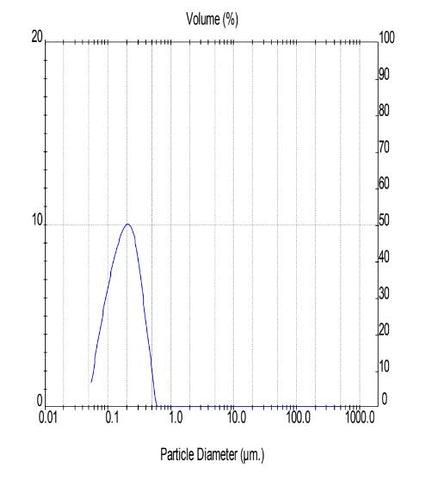Choosing a Homogenizer for Creating or Dispersing Nanoparticles
por NiuShangshen
Nanoparticle Creation
Nanoparticles are formally considered to be particles that have at least one dimension measuring 100 nm or less. However, many people consider nanoparticles to be any nano-scale particle, and neither definition is technically incorrect.
When comparing similar weights of materials, nanoparticles have a much larger total surface area than larger particles. This results in nanomaterials having different properties than their conventional counterparts. Nanoparticles have a wide range of applications including in medicine, cosmetics, food, transportation, energy, and environmental science.
Homogenization can offer an effective method for creating and dispersing nanoparticles. However, for the creation of nanoparticles by particle size reduction, a combination of strong forces are required. Something like a rotor-stator homogenizer won’t be able to effectively reduce particle sizes down to nano-scale.
Many nanomaterials are produced using a dry process and need to be mixed into liquid formulations. This often results in agglomeration of particles which limits the total surface area of the nanomaterial. To maximize the surface area and take full advantage of the potential benefits of nanomaterials, samples need to be deagglomerated and dispersed effectively.
Choosing a Homogenizer for Creating or Dispersing Nanoparticles
There are two main options for creating and dispersing nanoparticles using homogenization: high-pressure homogenization and ultrasonic homogenization. For some nano-scale materials, a bead mill homogenizer may suffice.
With sufficiently long and high-powered milling, bead mill homogenizers can achieve sub-micron particle sizes. Small quantities of powders, for instance, can often be milled to particle sizes between 500 and 1000 nm. Still, bead mills are non-ideal for nanoparticle suspensions or emulsions, as they are less efficient for nanoparticle creation and cannot accommodate larger volumes.
A high-pressure homogenizer forces a the sample through a valve or membrane. The combination of a large pressure drop and shear and other forces facilitates particle size reduction and dispersion of particles. High-pressure homogenizers are relatively expensive and are most suitable for processes involving larger volumes.

This graph shows the particle size analysis for an oil-in-water emulsion after two passes through a Nano high-pressure homogenizer.
Ultrasonic homogenizers can be effective in creating nanoparticles. One of the main forces involved in ultrasonic homogenization is cavitation. This involves the formation and collapse of bubbles within a liquid sample. Particle size reduction occurs when cavitation bubbles collapse and release large amounts of energy. Impact forces due to inter-particle collision also contribute to particle size reduction in an ultrasonic homogenization process.
Ultrasonic homogenizers can also be ideal for dispersing nanoparticles and breaking up agglomerated nanomaterial in suspensions. When cavitation bubbles collapse, the resulting high-speed liquid jets force particles apart.
One issue with using an ultrasonic homogenizer is that it may deposit trace amounts of titanium (from the probe) into your sample. In many cases, this isn’t a concern, but it could be a problem for certain applications, such as the production of nanomaterials for the medical and food industries.
Another issue with ultrasonic homogenization is that this process often generates a lot of heat. Temperature control is important when you’re dealing with particles that can degrade with a temperature increase, for example, many active pharmaceutical ingredients (APIs). That said, the heat production may be mitigated with proper cooling, such as using a cooling bath. You can also use a pulsed homogenization program in which heat can dissipate between pulses.
Process is not the only factor affecting nanoparticle size and studies have shown the effect of other parameters such as surfactant concentration, process time, and power. As such, using the right parameters, either high-pressure homogenization or ultrasonication could be suitable for a particular application.
